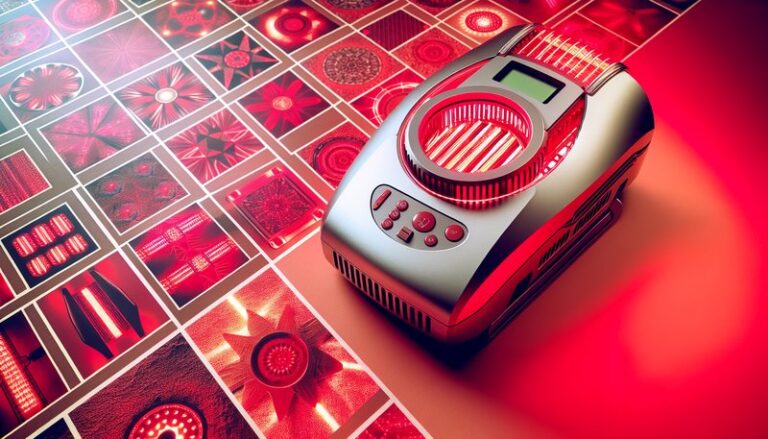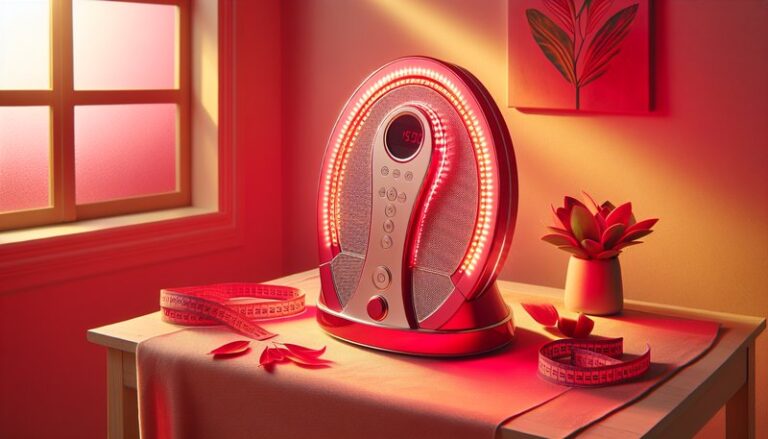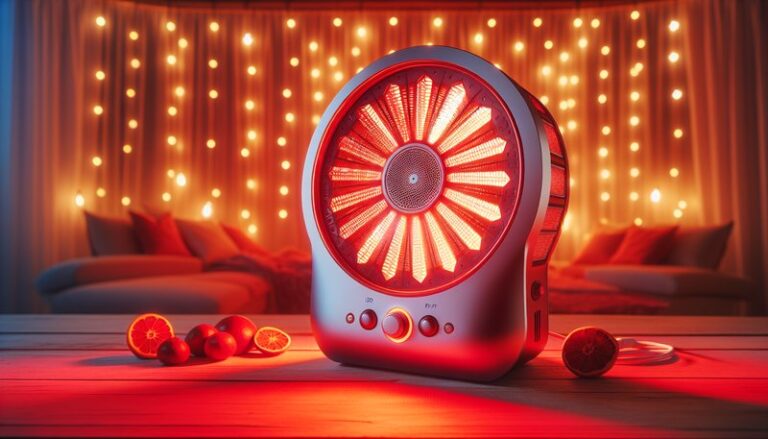How Does Red Light Therapy Help Your Skin?
How Does Red Light Therapy Help Your Skin?
Are you looking for a non-invasive way to rejuvenate your skin?
Red light therapy (RLT) is a treatment gaining traction for its purported benefits in enhancing skin health. This article will explore how red light therapy can assist your skin, detailing its mechanisms, benefits, considerations, and alternatives.
Key Takeaways
- Red light therapy aids in collagen production and skin regeneration.
- It can reduce inflammation and improve wound healing.
- RLT is a non-invasive alternative to more aggressive skin treatments.
What is Red Light Therapy?
Red light therapy is a therapeutic technique that uses low-wavelength red light to stimulate cellular function. This non-invasive treatment penetrates the skin and helps in tissue repair and rejuvenation. The technology stems from the study of how light energy influences cellular health and has been utilized in various medical and cosmetic applications, from sports injuries to skin care.
One of the key principles behind RLT is that it harnesses specific wavelengths of light (typically between 600 to 650 nanometers) that can interact with the mitochondria in our cells, leading to increased energy production and improved cellular function.
What are the Benefits of Red Light Therapy?
Red light therapy offers multiple advantages for skin health. Below are some of the key benefits that have been associated with this treatment.
Enhanced Collagen Production
Collagen is a vital protein that helps maintain skin elasticity and firmness. Studies suggest that RLT can promote the production of collagen, leading to smoother and firmer skin. Increased collagen levels can help reduce the appearance of fine lines and wrinkles, contributing to a more youthful complexion.
Reduced Inflammation and Skin Conditions
RLT has anti-inflammatory properties, which can be beneficial for individuals suffering from conditions like acne, rosacea, and psoriasis. By reducing inflammation, red light therapy may improve overall skin tone and texture, leading to a healthier appearance.
Faster Wound Healing
Another significant benefit is red light therapy’s ability to accelerate the healing process. This can be particularly advantageous for individuals who have experienced skin injuries or post-surgical scars. RLT increases blood circulation and promotes healing by enhancing the repair processes in the skin.
See the complete post Benefits of Red Light Therapy
Improved Skin Tone and Texture
With regular treatment, many users report noticing an improvement in skin tone and texture. Red light therapy can lead to more even pigmentation and a reduction in blemishes, contributing to a vibrant, youthful look.
Is it Possible to Perform Red Light Therapy at Home?
Yes, red light therapy can be performed at home, thanks to the availability of handheld devices and larger light panels designed for home use. These devices offer a convenient way for individuals to incorporate RLT into their skincare routines.
What are the Advantages of Home Red Light Therapy?
Convenience is a primary advantage, allowing users to treat their skin without scheduling appointments with professionals. Additionally, home devices can be a cost-effective long-term investment compared to ongoing treatment at a clinic.
What are the Disadvantages of Home Red Light Therapy?
One potential disadvantage is the variance in device quality. Not all at-home devices are created equal, and less effective models may not provide the desired results. Additionally, improper use or overexposure can lead to skin irritation.
Discover the story in Red Light Therapy Bed
What are the Things to Consider Before Starting Red Light Therapy?
Before diving into red light therapy, there are several important factors to consider.
Skin Type and Sensitivity
Individual skin types respond differently to treatments. It’s vital to assess your skin sensitivity and consult with a dermatologist if you have reactive skin or specific conditions.
Device Quality
Ensure that the device you choose is FDA-cleared or clinically proven to ensure safety and efficacy. Look for reviews and recommendations to aid in selecting a quality product.
Consistency and Duration of Treatments
For optimal results, consistency is key. Understanding the duration and frequency of treatments needed to see benefits is essential for effective use.
What are the Alternatives to Red Light Therapy?
If red light therapy doesn’t appeal to you, there are several alternatives that can also enhance your skin’s health.
Laser Therapy
Laser treatments target specific skin concerns through controlled light energy. They can be effective for reducing wrinkles, acne scars, and pigmentation issues but may involve downtime.
Microdermabrasion
This method exfoliates the skin’s surface, stimulating new skin growth and improving texture. Microdermabrasion can help address uneven skin tone and fine lines but may require multiple sessions for best results.
Chemical Peels
Using chemical solutions, this treatment exfoliates the outer layer of skin, helping to rejuvenate skin texture and address various skin issues. This method can be more aggressive than RLT and may require more recovery time.
Conclusion: Is it Recommended to Try Red Light Therapy?
In summary, red light therapy presents a promising option for individuals seeking to improve their skin health non-invasively. Its benefits—including enhanced collagen production, reduced inflammation, and faster wound healing—make it an appealing treatment. However, it’s crucial to consider individual skin types, device quality, and treatment consistency before starting.
Frequently Asked Questions
How long does it take to see results from red light therapy?
Results can vary, but many users report improvements in skin appearance within a few weeks of consistent treatment, typically three to five sessions per week.
Is red light therapy safe for all skin types?
Generally, RLT is considered safe for most skin types. However, individuals with specific skin conditions should consult their dermatologist before beginning treatment.
Are there any side effects associated with red light therapy?
While side effects are rare, some users might experience temporary redness or sensitivity after treatment. Following device instructions carefully can help minimize these effects.
Can I use skincare products before red light therapy?
It’s advisable to avoid heavy creams or products immediately before treatment, as they may hinder light penetration. However, applying products after can enhance their efficacy.
How often should I undergo red light therapy for optimal results?
For best results, treatments may need to be conducted three to five times per week, with each session lasting anywhere from 10 to 20 minutes, depending on the device.






